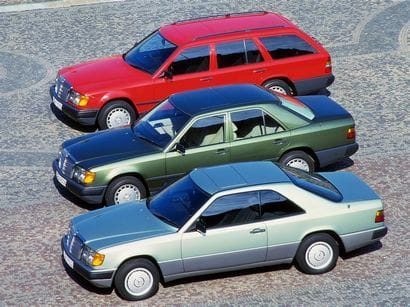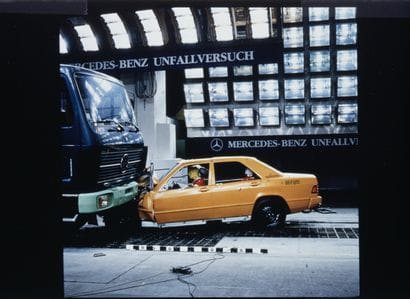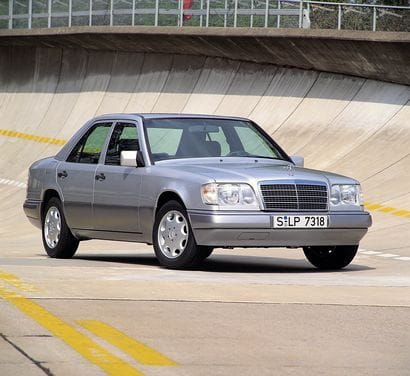It may seem like just yesterday but the first model 124 series Mercedes Benz just turned a quarter century old.

W 124 series
There are few vehicles on the road today that are as instantly recognizable as the Mercedes-Benz 124 series sedans. Despite its stately proportions, the W 123, which preceded the W 124 (produced from 1976 to 1985), looks more than a bit old-fashioned today while the W 210, which replaced the W 124 in 1995, hasn’t aged at all well, with only the hood-mounted Mercedes star separating it from any number of similarly-styled sedans of its era.
The 124, on the other hand, could never be mistaken for anything other than a Mercedes-Benz.

Debut
The name W 124 is actually the nomenclature used internally by Mercedes-Benz to designate the chassis of the mid-size luxury car (the executive car class in Europe) produced by the company from its debut in late November 1984 in Seville, Spain until Daimler ceased production of the last of the model variants in 1997.
Over its lifetime, the W124 was offered in four different body styles: sedan (saloon), wagon (estate), coupé and convertible (cabriolet). The W 124 was also available as a chassis for ambulances and other special purpose vehicles, as well as, later on, a long-wheelbase, six-door sedan.
Engine and transmission choices were also prolific, with 13 different gasoline engines, 5 diesel variants and 4 different transmissions offered over the lifetime of the model.

Design
Developed by Bruno Sacco, Joseph Gallitzendörfer and Peter Pfeiffer, the W 124 broke new ground for aerodynamics and safety. The characteristic rear end reduced aerodynamic drag from 0.44 in the W 123 to either 0.29 or 0.32 in the W 124, depending on engine type.
In terms of vehicle safety, the 124 series was the first vehicle model subjected by Mercedes-Benz not only to traditional crash testing, but also to computerized accident simulation. The extremely rigid passenger cell was equipped withy front and rear crumple zones that were designed to withstand an asymmetric head-on collision with a 40 percent overlap at 55 kilometers per hour.
Making its debut in the 124 was Mercedes’ iconic eccentric-sweep panoramic windshield wiper. This single wiper swept 86 percent of the windshield – which was the largest swept area for any passenger car worldwide at the time of its launch.

A sales milestone and a new class designation
In June of 1992, the two millionth 124 series came off the assembly line in Sindelfingen, Germany, while June of 1993 saw a new nomenclature come to the 124.
Traditionally, Mercedes-Benz models would be named where the first three numbers, say 500, represented the engine displacement (in this case 5 liters) and the last letter represented the engine or chassis – for example E for fuel injection (Einspritzung in German), D for diesel or L for long wheelbase.
In 1993, the new designator changed in all Mercedes-Benz models with the “E” representing the W124 chassis, followed by three digits that represented the engine displacement (the E300 would be the 124 chassis equipped with a 3 liter engine).

End of an era
In June 1995, Mercedes-Benz introduced the E-Class sedans of the 210 series, the successor to the W 124. Production of the 124 series sedans ended a short time later, while production of the wagon continued until 1996. The last W 124 convertible finally rolled off the production line in 1997.
During a period of over eleven years, production figures amounted to 2,058,777 sedans, 340,503 wagons, 141,498 coupés, 6,343 convertibles, 2,342 long-wheelbase sedans and 6,398 chassis for special purpose vehicles – 2,555,861 vehicles in total.
On its 25th birthday in 2009, the first cars from the series officially achieved what Mercedes-Benz calls the rank of ‘youngtimer’ or recent classic – a term that, in the case of the W 124, is certainly appropriate.













